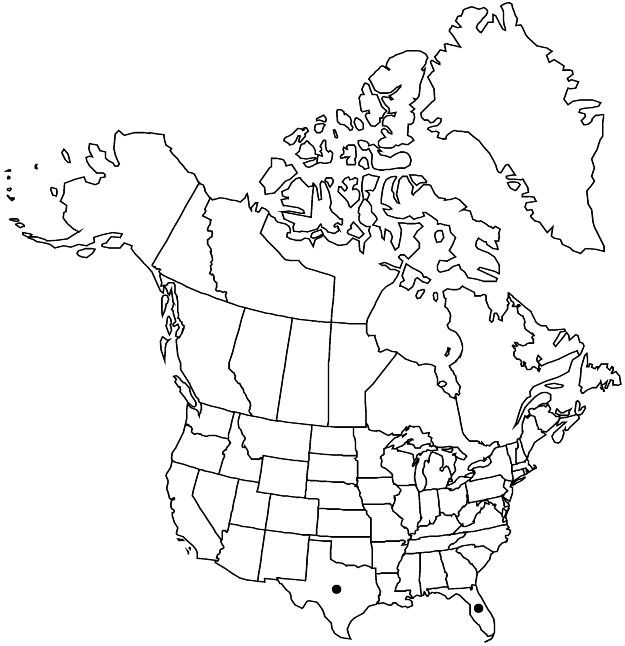Melochia tomentosa var. tomentosa
Herbs, perennial, subshrubs, or shrubs, to 2.5 m, sometimes taprooted. Leaves: petiole 0.3–2.5 cm; blade ovate to lanceolate, 1.5–6 × 0.8–4 cm, surfaces tomentulose and canescent, hairs stellate. Inflorescences usually axillary, sometimes terminal or leaf-opposed, cymose and umbellate, umbels 3–5-flowered; peduncle 6–8 mm; bracteoles 3, at base of pedicel. Pedicels 1–5 mm. Flowers dimorphic; calyx 5–7 × 4–6 mm, teeth deltate to ovate, acute or acuminate; petals purple, pink, or violet, (6–)8–11 × 2–3 mm; longistylous form: stamens 4–6.5 mm, pistil 7.5–10.5 mm; brevistylous form: stamens 9–9.5 mm, pistil 6 mm. Fruits capsules, not purple-blotched, 5-winged, long-beaked, pyramidal, 6–9 × 7–9 mm, dehiscence loculicidal. Seeds 1 or 2 per locule. 2n = 18.
Phenology: Flowering spring–fall.
Habitat: Dry, open woodlands, brushlands, pinelands
Elevation: 0–1300 m
Distribution

Fla., Tex., Mexico, Central America (Belize, El Salvador, Guatemala, Honduras, Nicaragua), West Indies, South America (Brazil, Colombia, Suriname, Venezuela).
Discussion
Selected References
None.